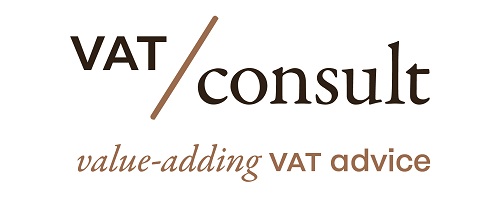On December 15, 2005, the ECJ issued its decision in the case C-63/04 (Centralan Property).
Context: Sixth VAT Directive – Article 20(3) – Capital goods – Deduction of input tax – Adjustments of deductions – Immovable property – Disposal by means of two connected transactions, one exempt, the other taxable – Apportionment.
Article in the EU VAT Directive
Article 20(3) of the Sixth VAT Directive (Article 188 of the EU VAT Directive 2006/112/EC).
Article 188 (Adjustment of VAT deductions)
1. If supplied during the adjustment period, capital goods shall be treated as if they had been applied to an economic activity of the taxable person up until expiry of the adjustment period.
The economic activity shall be presumed to be fully taxed in cases where the supply of the capital goods is taxed.
The economic activity shall be presumed to be fully exempt in cases where the supply of the capital goods is exempt.
2. The adjustment provided for in paragraph 1 shall be made only once in respect of all the time covered by the adjustment period that remains to run. However, where the supply of capital goods is exempt, Member States may waive the requirement for adjustment in so far as the purchaser is a taxable person using the capital goods in question solely for transactions in respect of which VAT is deductible.
Facts
- Centralan is a wholly owned subsidiary of Centralan Holdings Ltd, which is itself wholly owned by the University of Central Lancashire Higher Education Corporation (‘the University’). Centralan opted for taxation under Article 13C(b) of the Sixth Directive.
- Inhoco 546 Ltd (‘Inhoco’) is, like Centralan, a wholly owned subsidiary of Centralan Holdings Ltd. Unlike Centralan, Inhoco did not opt for taxation under the above provision.
- In 1994, the University, whose ability to deduct input VAT is limited, procured the construction of a building known as the Harrington Building (‘the Harrington Building’).
- On 14 September 1994, Centralan bought the Harrington Building from the University for the sum of GBP 6 500 000 plus VAT of GBP 1 370 500, and leased it back to the University for a term of 20 years at a yearly rent of GBP 300 000 plus VAT (‘the 20-year lease’). That transaction enabled Centralan to deduct the VAT paid on the acquisition of the Harrington Building as input tax.
- From the perspective of the University, the transactions described in the preceding paragraph had the effect of replacing the non-deductible VAT which had been paid during the construction of the Harrington Building with the non-deductible VAT on the rents paid throughout the term of the 20-year lease. That replacement was not challenged by the Commissioners.
- In the course of the third interval after the acquisition of the Harrington Building, that is, after the amendment of the VAT Act referred to in paragraph 15 above, Centralan disposed of its whole interest in that building, so that regulation 115(3) of the VAT Regulations had to be applied.
- That disposal was effected by means of two successive transactions.
- The first transaction was the grant, on 22 November 1996, of a 999-year lease (‘the 999-year lease’), subject to the 20-year lease in favour of the University, to Inhoco for a premium of GBP 6 370 000 and a nominal rent if demanded.
- By the second transaction, which took place on 25 November 1996, the freehold reversion in the Harrington Building was transferred to the University for a sum of GBP 1 000 (‘the transfer of the freehold reversion’).
- The grant of the 999-year lease was an exempt transaction because, although Centralan had opted for taxation of letting and leasing of immovable property, it was a legal person connected to Inhoco within the meaning of paragraph 2(3A) of Schedule 10 to the VAT Act.
- The transfer of the freehold reversion was a taxable transaction because, even though the University and Centralan are connected legal persons within the meaning of Schedule 10, the provisions of Item 1(a)(ii) of Group 1 in Schedule 9 to the VAT Act excluded, in application of Articles 4(3) and 13B(g) of the Sixth Directive, the exemption for the supply of buildings completed less than three years before.
- In view of those transactions, a question arose as to how to apply the rules for the adjustment, under regulation 115(3) of the VAT Regulations, of the deduction of the input VAT paid on the acquisition of the Harrington Building by Centralan. The Commissioners claimed that the supply to be taken into account was the 999-year lease and that the transfer of the freehold reversion should be ignored as de minimis. In the alternative, they claimed that there should be an apportionment between the grant of the 999-year lease and the transfer of the freehold reversion, in proportion to the respective value of each of those transactions. By virtue of the former interpretation, Centralan would be liable to pay a sum of GBP 796 250 in respect of VAT, whereas, according to the second interpretation, the amount of VAT due would be GBP 796 090.
- Centralan challenged that point of view before the VAT and Duties Tribunal. It argued that it had disposed of its whole interest in the Harrington Building by the transfer of the freehold reversion alone, with the result that it was not liable under regulation 115 of the VAT Regulations for more than GBP 943.93 in respect of VAT.
- In rejecting Centralan’s argument and the Commissioners’ first interpretation, the VAT and Duties Tribunal held that the company had disposed of its whole interest in the Harrington Building by means of two supplies, namely, the grant of the 999-year lease and the transfer of the freehold reversion. According to the Tribunal, those two supplies were made in the course of the same interval and were moreover ineluctably linked and preordained in the sense that there was no likelihood that the transfer of the freehold reversion would not be effected once the 999-year lease had been granted.
- In those circumstances, the VAT and Duties Tribunal concluded that Article 20(3) of the Sixth Directive and therefore, necessarily, regulation 115(3) of the VAT Regulations must be construed as implicitly providing for an apportionment in a case where the whole ownership interest in a capital item is disposed of in two stages, entailing two supplies, one of which is exempt and the other taxable. On the basis of that reasoning, it decided that Centralan was liable for a sum of GBP 796 090 in respect of VAT.
- The Commissioners did not appeal the rejection of their argument that the transfer of the freehold reversion should be ignored as being de minimis.
Questions
is Article 20(3) of the Sixth VAT Directive to be interpreted so that:
(a) that capital good is regarded until the expiry of the period of adjustment as if it had been applied for business activities which are presumed to be fully taxed;
(b) the capital good is regarded until the expiry of the period of adjustment as if it had been applied for business activities which are presumed to be fully exempt; or
(c) that capital good is regarded until the expiry of the period of adjustment as if it had been applied for business activities which are presumed to be partly taxed and partly exempt in the proportion of the respective values of the taxed sale of the freehold reversion and the exempt grant of the 999-year lease?’
AG Opinion
Where a building is disposed of by means of two preordained and independent supplies, that is to say by a tax exempt grant of a 999 year lease over the building and, three days later, by a taxable sale of the freehold reversion, Article 20(3) of Sixth Council Directive 77/388/EEC of 17 May 1977, on the harmonisation of the laws of the Member States relating to turnover taxes – Common system of value added tax: uniform basis of assessment, is to be interpreted as meaning that the capital good is regarded until the expiry of the period of adjustment as if it had been used for business activities which are partly taxed and partly exempt in the proportion of the respective values of the taxed sale of the freehold reversion and the tax exempt grant of the 999 year lease.
Decision
Article 20(3) of Sixth Council Directive 77/388/EEC of 17 May 1977 on the harmonisation of the laws of the Member States relating to turnover taxes – Common system of value added tax: uniform basis of assessment, as amended by Council Directive 95/7/EC of 10 April 1995, is to be interpreted as meaning that, where a 999-year lease over capital goods is granted to a person against the payment of a substantial premium and the freehold reversion in that property is transferred three days later to another person at a much lower price, and where those two transactions
– are inextricably linked, and
– consist of a first transaction which is exempt and a second transaction which is taxable,
– and if those transactions, owing to the transfer of the right to dispose of those capital goods as owner, constitute supplies within the meaning of Article 5(1) of that directive,
the goods in question are regarded, until the expiry of the period of adjustment, as having been used in business activities which are presumed to be partly taxable and partly exempt in proportion to the respective values of the two transactions.
Summary
The European Court of Justice (‘ECJ’) ruled that under art. 20(3) of Directive 77/388 (‘the sixth directive’) where a 999-year lease over capital goods was granted to a person against the payment of a substantial premium and the freehold reversion in that property was transferred three days later to another person at a much lower price, and where those two transactions were inextricably linked, and consisted of a first exempt transaction and a second taxable transaction, and if those transactions, owing to the transfer of the right to dispose of those capital goods as owner, constituted supplies within art. 5(1), the goods in question were regarded, until the expiry of the period of adjustment, as used in partly taxable and partly exempt business activities in proportion to the respective values of the two transactions.
Source
Similar ECJ cases
Reference to the case in the other EU MS
Newsletters
- BTW jurisprudentie
- Chartered Accountants Ireland
- EFS – The line between use and abuse: overview of the introduction of the principle in VAT and Customs
Join the Linkedin Group on ECJ VAT Cases, click HERE
Latest Posts in "European Union"
- Do Loyalty Program Points Qualify as Vouchers? CJEU to Decide on VAT Implications
- EU Advocate General: Loyalty Points Not Free for VAT Purposes in Lyko Case
- Court Rules Sudoku Books as Periodicals: Implications for VAT and Tariff Classification
- EU Directive 2025/1539 Enhances IOSS for Improved VAT Compliance and Fair Competition
- ECJ Advocate General: VAT Applies to Lithuanian In-Game Currency Resale Profits













